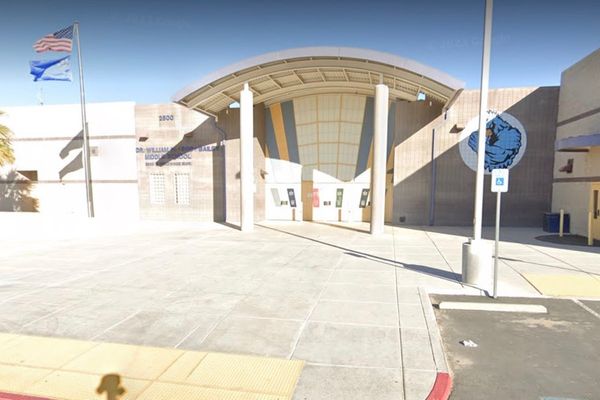
When tarantulas are on the move, it’s best to use caution. That’s the message park officials are trying to get out after a roving arachnid caused a car crash in Death Valley national park last weekend.
Two tourists from Switzerland braked hard after seeing a tarantula scampering across Route 190 in a remote area almost 5,000ft above sea level. A 24-year-old Canadian man on a motorcycle then crashed into the back of the Swiss couple’s rented camper van and had to be transported to a hospital.
Park officials noted that the tarantula was unharmed.
The tarantula was likely out on the road because it is mating season in the tarantula world. Mature male tarantulas emerge at this time of year in search of a partner. Most don’t mature for the first eight years of their lives, but then, it’s as if an alarm goes off. “Ding dong, it’s time,” Forest Urban, manager of the invertebrate program with the Natural History Museum of Los Angeles, told the Guardian in 2019 of the spiders’ mating habits. “All of a sudden, the eight-to-12-year-olds, they’re like, hey, let’s get together, let’s go to the bar.”
Males will try to find a female through the vibrations she makes in her burrow, which sits a foot underground. If he’s lucky enough to knock and enter, he might be able to mate – but if he lingers too long, he’ll be eaten by the female, who is much larger than the male and lives twice as long. And even if he escapes becoming a post-coital lunch, most males die within months of mating.
So it feels like crossing a road shouldn’t be the biggest worry for a desert tarantula, but since they move slowly and are blind, any kind of fast-moving vehicle can be a danger.
Superintendent Mike Reynolds, the first National Park Service employee to reach the scene of the crash, has some advice for drivers. “Please drive slowly, especially going down steep hills in the park. Our roads still have gravel patches due to flood damage, and wildlife of all sizes are out,” he said in a statement.
The park points out that tarantulas are slow-moving and nonaggressive: their bite is reported to be similar to a bee sting, and is not deadly to humans. Most tarantulas are about the size of an adult hand and mainly prey on insects, but they can also hunt for frogs, toads and mice.
Other animals in national parks can cause much more havoc when people rush towards them instead of trying to avoid them: staff at Yellowstone national park were forced to euthanize a bison calf earlier this year after a visitor tried to pick up the animal. And a section of the Blue Ridge Parkway park in North Carolina had to be closed after there were “multiple documented reports of visitors feeding and attempting to hold a young bear in recent weeks”.







